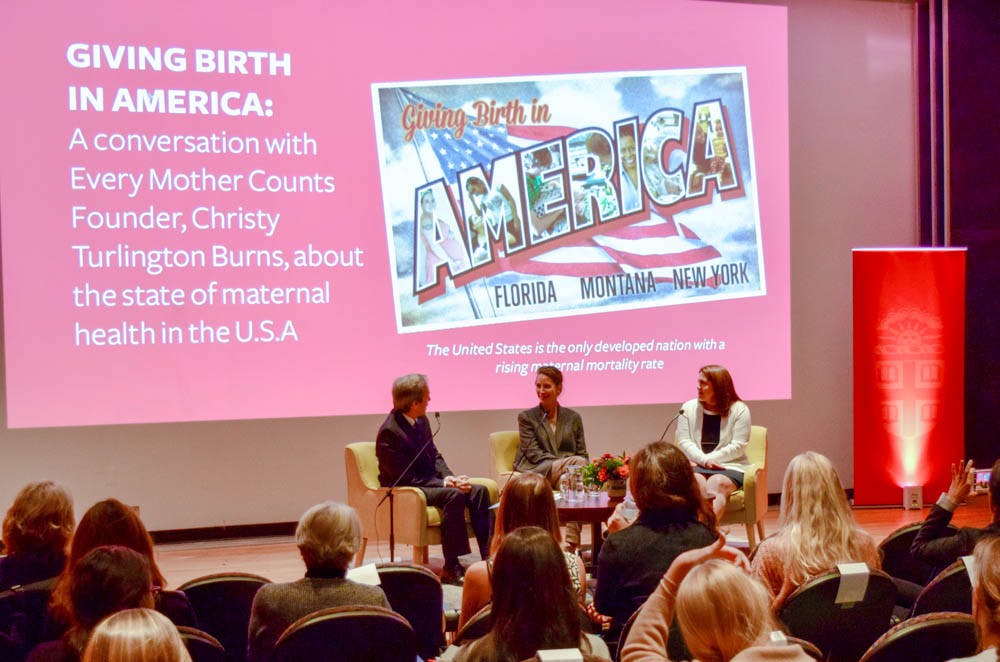Community members packed into a room in the List Art Center Tuesday evening to learn about the maternal mortality rate in the United States — a figure that has more than doubled over the last two decades.
“Women report constantly that they’re not listened to, that they’re ignored, that they’re told to leave,” Christy Turlington Burns, founder of nonprofit Every Mother Counts, told the audience. She added that fear of seeking care can be exacerbated when other factors, such as immigration status or substance abuse habits, are taken into account.
Tuesday’s event included a film and an accompanying panel featuring Burns and Erika Werner, director of the division of maternal-fetal medicine at Women and Infants Hospital of Rhode Island. The film is part of a series entitled “Giving Birth in America,” which chronicles the challenges of pregnancy throughout the United States. The film focused on California and recounted the story of an immigrant mother during pregnancy and childbirth.
Burns was inspired to create the film series after conducting research about the United States’ maternal health in comparison to other countries’. She told the audience that the United States’ maternal mortality ratio dropped from 41st in 2003 to 55th in 2019. The United States has the worst mortality rate for maternal health of the 11 most “high-income” countries in the world, according to a December 2018 Common Wealth Fund study.
“That questioning and that interest is what got me this series, ‘Giving Birth in America,’” she said.
Both Burns and Werner described a number of factors that they believe contribute to the incidence of maternal deaths in the United States. They pointed to the rise of chronic health conditions like obesity and hypertension in addition to racial disparities in maternal complications that have become increasingly evident.
Burns said that though the evidence and data about racial disparities in maternal mortality rates has existed for years, she has noticed increased publicity on the topic as of late. “In the last couple of years, what has been exciting about the additional media attention and the stories that are rising to the surface is that it’s something we really can’t look away from,” she said.
The panelists also highlighted the connection between poor maternal care and the United States’ health insurance system. Werner said that almost 50 percent of pregnancies in the United States are unintended, which can lead to deficiencies in preconception counseling and information. Insurance complications can also prevent women from seeing a doctor during their first trimester and from receiving care after childbirth.
“The insurance issues lead to a system where we’re very reactive and not very proactive,” Werner said. “All of these are reasons why we keep getting worse and not getting better.”
Burns stressed the importance of extending health care to mothers after childbirth. “Most of these deaths are happening postpartum,” she said. “It just emphasizes how important it is to continue, as long as you can, care for moms.”
The event was co-sponsored by the School of Public Health, the Hassenfeld Child Health Innovation Institute and Every Mother Counts. Patrick Vivier, director and executive committee member of the Hassenfeld Institute, emphasized that the work done by Every Mother Counts, which focuses on maternal health, is “critically important.”





